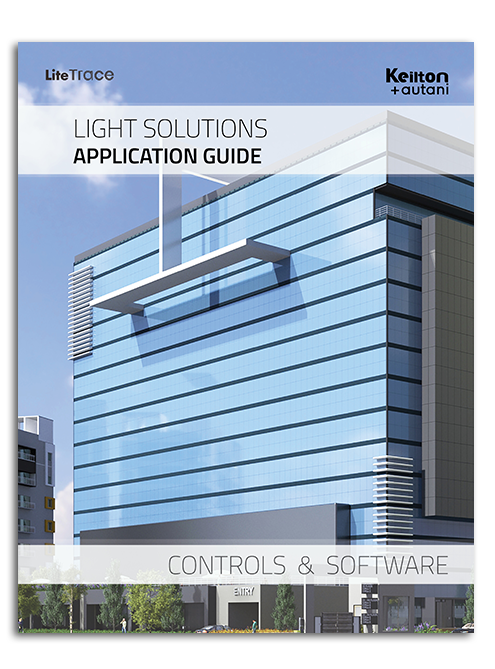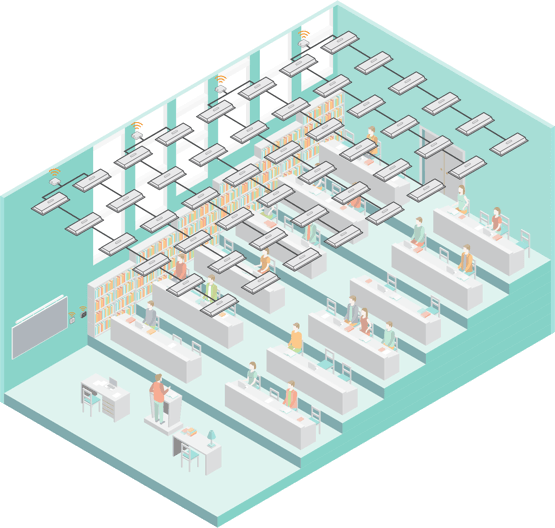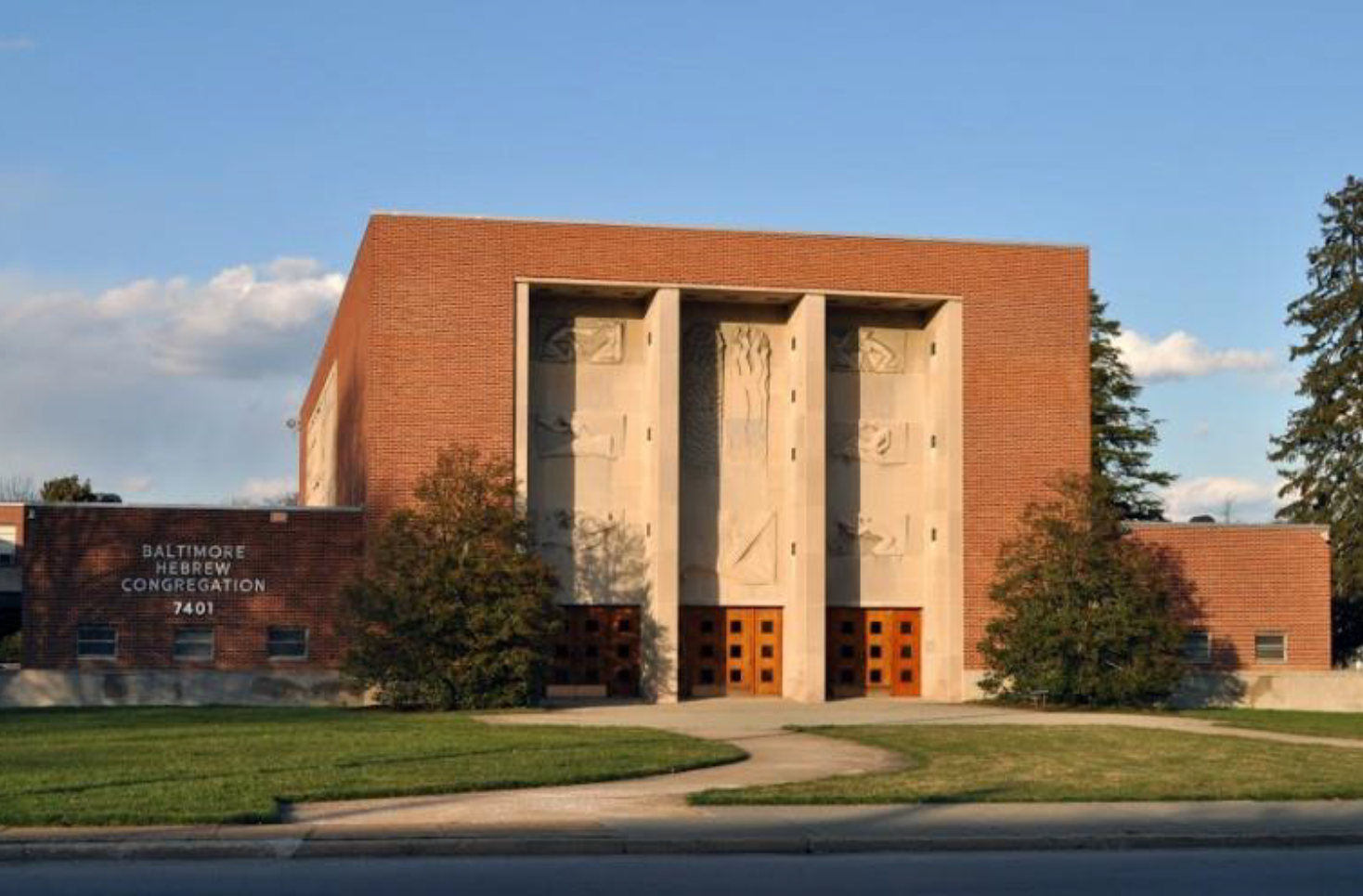David Weiss is a highly active user of the Autani controls system. Through his active engagement, Baltimore Hebrew may be garnering the greatest energy savings benefits from the Autani networked building controls system. Having obtained a three-month payback on his investment, David is also a strong proponent of not just having the Autani system, but using it to its fullest potential.
David is the controller for the Baltimore Hebrew Congregation, which serves over 1,000 families in the Baltimore, Maryland area. Managing energy use for such an expansive facility is vital to the mission of BHC. This synagogue has grown since its original construction in 1951 into a 125,000 square foot facility that includes not just a 1,000-seat synagogue, but also the 1,000-seat Dalsheimer auditorium (added in 1966), the Hoffberger gallery, as well as a host of smaller meeting rooms. The synagogue also provides pre-school services to almost 100 preschoolers in a separate three-story building. Needless to say, David has a great deal on his plate. David actively monitors the use of each controlled area of the synagogue in order to maintain occupant comfort while maximizing energy savings through a metering system provided by Autani that works directly with the BHC utility provider’s meters to feed data into the EnergyCenter. A self-described “Counter of the shekels”, David has used the Autani system to avoid using precious funds to pay Baltimore Gas & Electric and instead put those toward the BHC mission.
With such an active congregation, the staff and congregants host regularly-scheduled functions that fall at the same time and day each week (e.g., services) and a host of other functions that are less consistent, but also important. Each week, the executives provide David with a list of the events scheduled for the week. David then uses the form to address the heating or cooling needs throughout the buildings. During the winter months, with a weekly schedule in hand, David can leave zones or rooms that will be unoccupied at a cool 60o while heating the rooms that will be occupied to a more comfortable temperature. During the summer months, cooling can be disabled in the unoccupied areas, supporting year-round savings.
Over time, David has used the system to provide the data necessary to let him determine how far in advance he must begin to bring a room to a comfortable temperature and thus he sets the system to start sufficiently in advance to warm (or cool) the synagogue (6 hours) or a smaller meeting room (1 hour). By using this methodology, David reports that he was able to obtain a payback for the design, purchase and installation of the Autani system in three months.
From a 29-congregant start in 1830, Baltimore Hebrew Congregation built its current facility in 1951, with significant additions over time, including notably a truly beautiful collection of stained-glass windows designed by Nissan Engel, an Israeli-born artist, that depict the history of the Jewish faith in the Hoffberger Chapel.
In addition to the HVAC controls, Autani also provided lighting controls that operate to provide outdoor and security lighting for ingress and egress. Given the age of the building construction re-wiring is not a good option. David began his search for a networked building controls system by looking specifically for a wireless building controls system that would not require expensive installation and rewiring. His search took him no further than an internet search engine that introduced him to the Autani controls offerings. Some discussions with the local electrician led to an introduction and, over time, David has installed a series of outdoor lighting controls and a collection of thermostats and sensors throughout the facility. By connecting each of these devices wirelessly, David has avoided the need for any wiring and thus preserved the building and avoided the costs for wiring installation. Simply commissioning each new piece of the system back to his EnergyCenter manager has allowed David the functionality that he seeks at a fraction of the cost of complicated wired systems. A single dashboard allows him to manage each area of the building from his desk, which he does actively.
David installed a pulse counter early in his journey in order to provide real-time feedback on his gas and electric utilization. A college biology major and former chicken farmer, David did not have a significant building automation background before coming to Autani. Instead, he took the data presented through the event logs in the Autani system and compared those to the data delivered by his Autani pulse counters and began to experiment with ways to avoid peaks in his electricity usage, which avoided demand charges. As an example, he learned that starting to heat the synagogue before other demands hit the system saves him about $100 in demand charges alone. Step one was to look at the Autani system data to identify when he had peaks in electrical use. Looking at the logs, he could see what users in the building were creating those peaks. He then worked with his facilities team to adjust the practices so that those peaks could be reduced. Each experiment has led to better processes that provide consistent comfort for the congregation and the staff at reduced energy costs.
Lighting is another area that has proven ripe for benefits. With a large, active congregation early winter dusk can prove a problem for those leaving a late meeting for the parking lots. Eager to save the costs of lighting, David’s basic rule is to turn those outside lights off when the last meeting has ended. If a meeting runs over, then he uses the mobile functionality to turn the lights back on for those leaving the building at whatever time is needed. A hard and fast rule that turns all the lights off at 11:59pm means that even if he forgets to go back into the system to turn the lights off after everyone has had time to leave, he is still avoiding the costs of lighting the parking lot for the night.
Meanwhile on Park Heights Avenue, the most-trafficked side of the building, there are displays that remain lighted from dusk until 11:59pm every night. Among the items to be seen on that avenue is the original cornerstone from the Madison Avenue Temple, containing mementos from 1890. This is a shining example of the facility and the administration is eager to show passers-by what the Baltimore Hebrew Congregation has to offer.
Over time, David has added to his Autani System to gain still greater control over the BHC facilities. That functionality is available because all he needs is a couple of pieces of equipment and he can perform the installation with the facilities staff at the building. A wireless system provides him with the flexibility to place new sensors or other devices where he wishes and installation is as simple as turning a screw to bind the new sensor to the wall or ceiling. With a few clicks he is then able to commission that next addition to his manager and can begin controlling that new area, whether lighting or temperature or humidity. His pulse counters continue to register his actual energy use (both gas and electric), but his refined ability to see the data on what that consumption is supporting allows him to save significant money to support the congregation’s other missions.


















